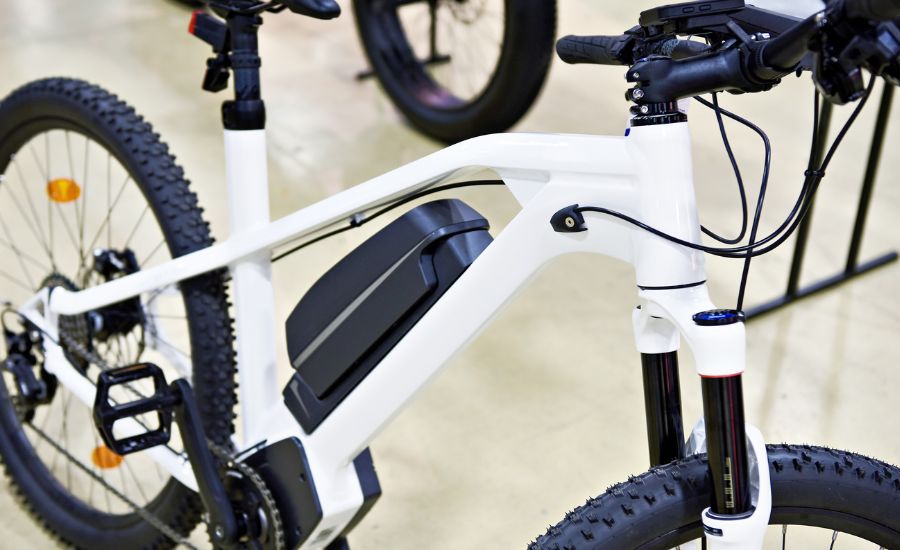How far and fast you can go on your electric bike depends largely on the battery, which is one of its key components. However, eBike batteries vary in quality and performance. Some are more advanced, efficient, and durable than others, but they also cost more.
The best battery for your e-bike depends on what you need and want from it. In this guide, you will discover all the important details about the different categories of batteries, how they operate, and how to take care of them properly.
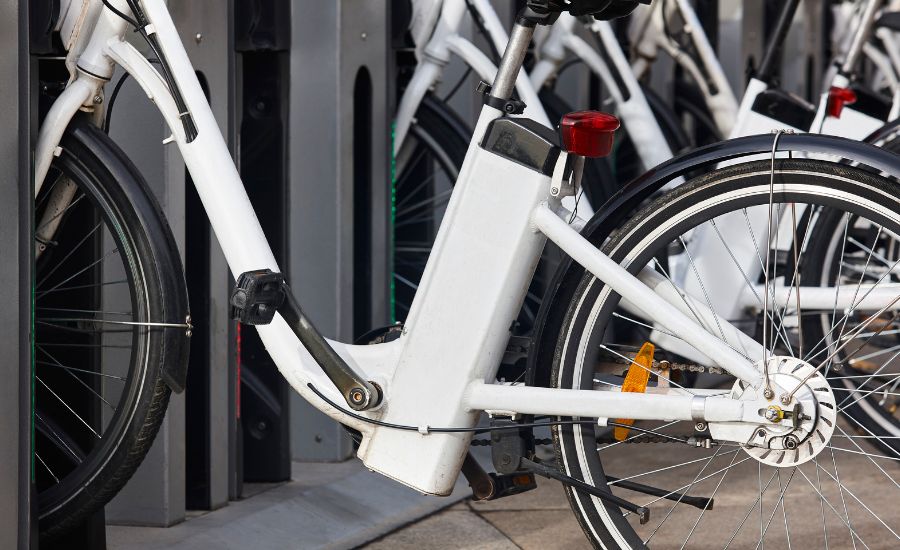
A brief look into e-bike battery evolution over the years
Since their invention in the late 19th century, electric bikes have undergone a lot of changes and improvements. Back then, the batteries were heavy, limiting the performance and convenience of the bikes.
Some of the earliest e-bikes relied on lead-acid batteries, which were not very reliable and could leak and corrode easily.
Over time, electric bicycles got new types of batteries, such as nickel-cadmium and nickel-metal hydride ones. These were lighter and more durable, enabling longer and faster rides on electric bicycles. However, they also had some issues, such as memory effects and toxicity.
Most e-bikes today rely on lithium-ion batteries, which are the best option so far. They are lightweight, powerful, and long-lasting. They also avoid memory effects and are better for the environment.
How to measure e-bike battery performance and range?
An electric bike’s battery is one of its key features. It provides power to the motor and affects how long and how fast you can ride.
However, there is a lot of variation in electric bike batteries. Some have more capacity and range than others, but they also cost more.
The range of a battery is how far you can go on a single charge. However, this is not a fixed number. It varies depending on several factors, such as your weight, the terrain, and the weather conditions.
For instance, going up a hill or facing the wind will demand more energy from the battery. Also, battery performance can be reduced in extremely warm or cold conditions.
Hot weather can damage the battery cells and shorten their lifespan. Cold weather can lower the battery output and reduce the battery capacity and range. However, some batteries are specially designed for low-temperature conditions.
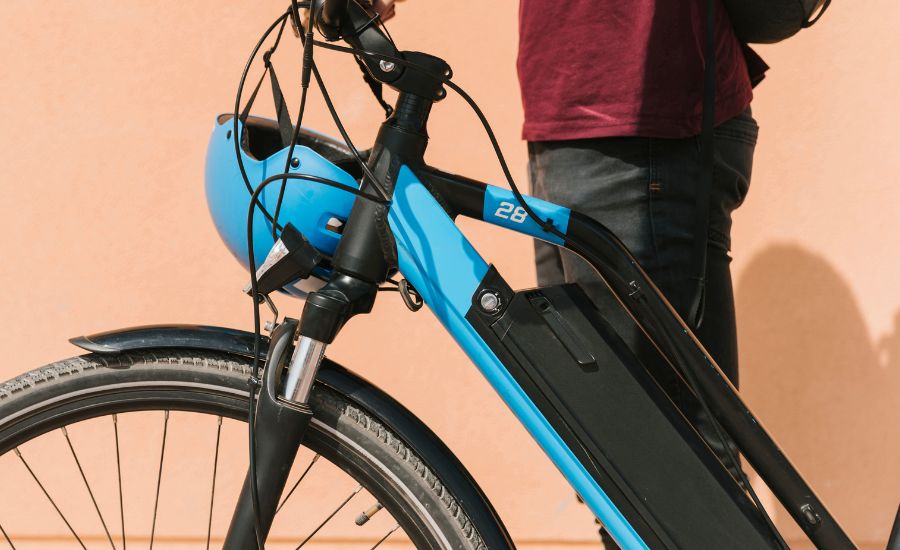
Amperes per hour (Ah) and Amps (A) in an e-bike
Amperes per hour (Ah) and amps (A) are important units that measure the battery’s charge and current for an electric bike.
Ah is the battery’s capacity. It indicates how long a battery can operate on one charge. For example, a 1.5 Ah battery can provide 1.5 amps for one hour.
A is the power of the battery. It tells how much force the battery can give to the motor and how fast the bike can go.
The higher the A, the more powerful the battery.
The Ah rating is the duration a battery can provide a certain current. The higher the Ah rating, the more the battery will run. But this is also affected by other factors, such as weight, terrain, and weather.

Watts (W) and Watt-hours (Wh) in an e-bike
Electric bike batteries have different levels of power and durability that affect their performance. You can find out by looking at their watts and watt-hours.
Watts (W) measures the power of the battery or the amount of energy it can deliver to the motor per second. A higher wattage means a higher energy density and a faster and stronger bike.
Watt-hour (Wh) is the unit of measurement for the battery’s capacity, or the amount of energy it can hold and deliver over time. The more Wh, the farther and longer your bike can go.
To get Wh, you multiply watts by hours. For example, a 500 Wh battery can give 500 W for one hour, or 250 W for two hours.
But Wh is not always accurate. They can change depending on your riding habits and the situation you face. For example, going up a slope or facing the wind will use more energy and lower your range.

Electric bike battery types: which is the best?
Your e-bike can have various types of batteries, depending on the model and the manufacturer. Some types of batteries are better than others in terms of performance and durability.
One of the best types of batteries for e-bikes is lithium. Let’s take a look at the different types of lithium batteries and how they compare to other types of batteries.
Lithium batteries
A lithium battery is the most popular choice for electric bikes. It is light, powerful, and cost-effective. However, the lithium battery also needs proper safety measures to prevent damage. With modern technology and a good manufacturer, this problem can be solved easily.
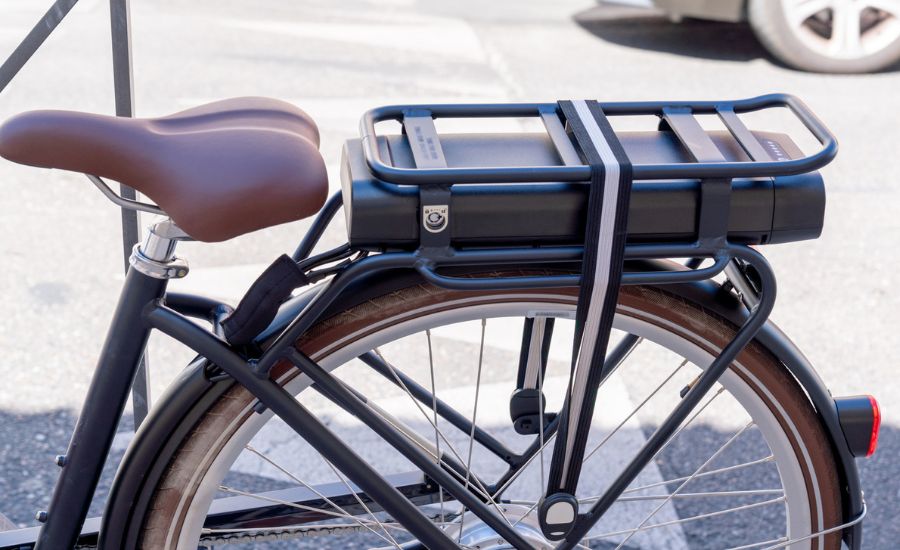
Lithium-ion batteries (Li-Ion)
The most prevalent type of battery for e-bikes is lithium-ion batteries. The lithium-ion battery is composed of smaller cells that can hold a considerable amount of energy in a compact size.
The lithium-ion battery also has fewer environmental and safety risks than other batteries. However, Li-ion is not cheap, and it needs a battery management system to work properly.
Lithium-ion polymer batteries (LiPo)
Lithium-ion polymer batteries employ a firm electrode rather than a fluid one. This results in them being lighter and slimmer than certain lithium-ion batteries.
Laptops and cell phones often use lithium-ion polymer batteries, but they also cost more and are more fragile.
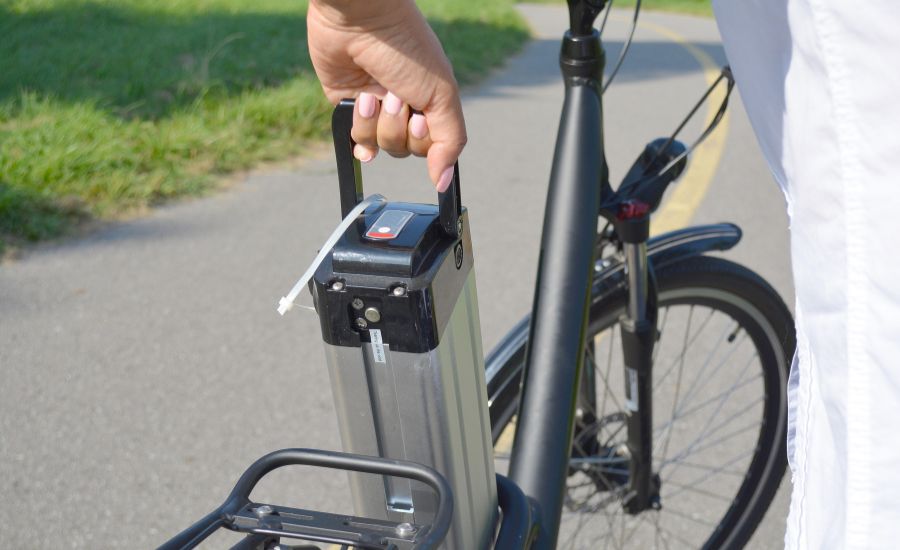
Lithium Cobalt batteries (LCo)
Another kind of lithium-ion battery is lithium cobalt batteries. They possess a high energy density and a long lifespan. They also cost a lot and need to be maintained well.
They have a built-in battery light that shows the power level.
Lithium cobalt batteries can transfer energy quickly by moving lithium to the electrode. They are suitable for riding in hilly areas.
Lithium Manganese batteries (LiMg204)
The latest addition to the lithium-ion battery family is lithium manganese batteries. They outperform other lithium batteries in durability and versatility. Many hybrid cars and electric bikes use them. Lithium manganese batteries offer a lower price and higher safety than other lithium-ion batteries.
Lead-acid batteries (SLA)
Lead-acid batteries are the earliest type of batteries. They are inexpensive and recyclable, but they are also bulky and inefficient. Lead-acid batteries have lower power output and higher weight than other batteries.
They need to be replaced more regularly than other batteries. Lead-acid battery operates by using lead dioxide reactions to produce electricity. They can be recharged and used for many purposes.
Lead-acid batteries are primarily utilized for electric vehicles like pallet trucks and buggies. They feature different sorts, such as sealed, VRLA, and recombinant. The sealed lead-acid battery is the most frequent sort.
They do not need water or service. VRLA batteries feature a valve that adjusts the pressure and prevents them from getting too hot or bursting. Recombinant batteries use different chemical reactions to create more power than other lead-acid batteries.
Nickel batteries
Nickel-cadmium batteries (NiCd batteries)
Nickel-cadmium batteries are rechargeable batteries that have a high amount of energy and a long lifespan. NiCd batteries are good for applications that need a lot of power, such as power tools and electric motors.
However, they are also heavy, expensive, and toxic. Nickel-cadmium batteries are hard to recycle and dispose of. They also lose their charge quickly when not used.
Nickel-metal Hydride batteries (NiMh batteries)
Nickel-metal hydride batteries are superior and cheaper than nickel-cadmium batteries. They have a higher capacity and a lower self-discharge rate. They are also more eco-friendly.
However, they do not last as long and they can overheat easily. They are also difficult to maintain and charge. They are not suitable for electric bikes.
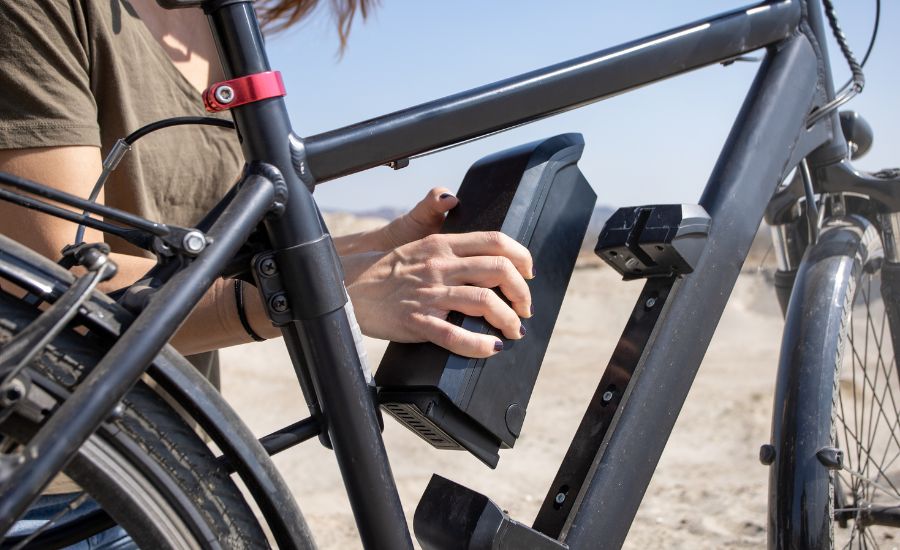
Tips to maintain your eBike batteries
The power and comfort of your e-bike come from its battery. It’s important to take good care of it. Here’s how you can extend battery life:
Store the battery safely
Keep your battery in a shady, moisture-free spot.
Don’t use a battery that doesn’t fit your e-bike.
A mismatch can ruin not only the battery but also the bike.
Use a good-quality charger
Pick a charger that fits your battery. Check that the charger has the same voltage and capacity as your battery. Charge your battery correctly and do not overcharge or undercharge it.
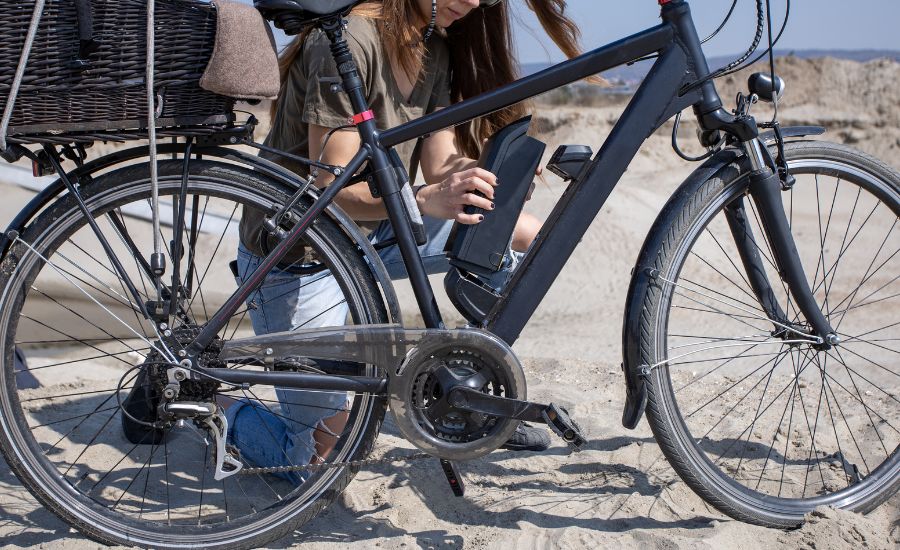
FAQ
Which battery is best for an electric bike?
Lithium-ion batteries are the best choice for electric bikes. They are lighter, more powerful, and more cost-effective than other batteries. They also have fewer environmental and safety risks than other batteries. However, they are not cheap and they need a battery management system to work properly.
What is the difference between 36 and 48-volt eBike battery?
The difference is in the amount of current that the battery can provide. A 36-volt battery can provide less current, usually around 15 amps, while a 48-volt battery can provide more current, up to 40 amps. This means that a 48-volt battery can make the e-bike faster and more capable of climbing hills.
What is the most common e-bike battery?
The most common eBike batteries are 48-volt batteries. They offer a good balance of power, speed, and hill-climbing ability. However, some manufacturers use 52-volt eBike batteries for their products. These batteries offer more power and performance than 48-volt batteries.
How to charge an electric bike battery?
The easiest way to charge an electric bike battery is to plug it into a power outlet. It is better to remove the battery from the bike before charging it.
This way, you can charge it in a safe and convenient place. Most chargers have LED lights that indicate when the battery is fully charged.
You should follow the instructions of your e-bike manufacturer on how to charge your electric bike battery efficiently and safely.
How long should you charge the battery?
The charging time for a battery depends on the type and size of the battery and the charger. Always stick to the manufacturer’s guidelines on charging your battery correctly.
Generally, lead-acid batteries take longer to charge, from 5 to 10 hours. Lithium batteries charge faster, from 2 to 5 hours.
What is the minimum battery voltage to avoid damage?
To prevent damage to your battery and extend its battery life, you should not let it discharge below a certain voltage. This voltage depends on the type and size of your battery. Generally, a minimum voltage of 25% is recommended for most e-bike batteries.
Some chargers will not charge a battery that is below this limit. Lithium batteries have a built-in protection circuit that prevents overcharging and over-discharging.
How long does an e-bike battery last?
Many things affect how long an e-bike battery lasts, such as the kind and size of the battery, the power and speed of the motor, the level of assistance you use, the terrain and weather conditions, and how well you maintain your battery.
Generally, a 24V, 36V, or 48V battery can power a motor from 250W to 600W. The range of an e-bike can vary from 20 to 100 miles on a single charge. Most e-bikes have an energy management system that adjusts the power output according to your riding style and needs.
You should always check your rechargeable battery level before riding and recharge it when needed.
Conclusion
Electric bikes are a great way to enjoy cycling with less effort and more fun.
Choosing the right battery for your e-bike depends on your needs, preferences, and budget. You also need to take care of your battery to make it last longer and avoid problems.
By following these recommendations, you can use your e-bike battery to its full potential and experience a smooth and comfortable ride.

